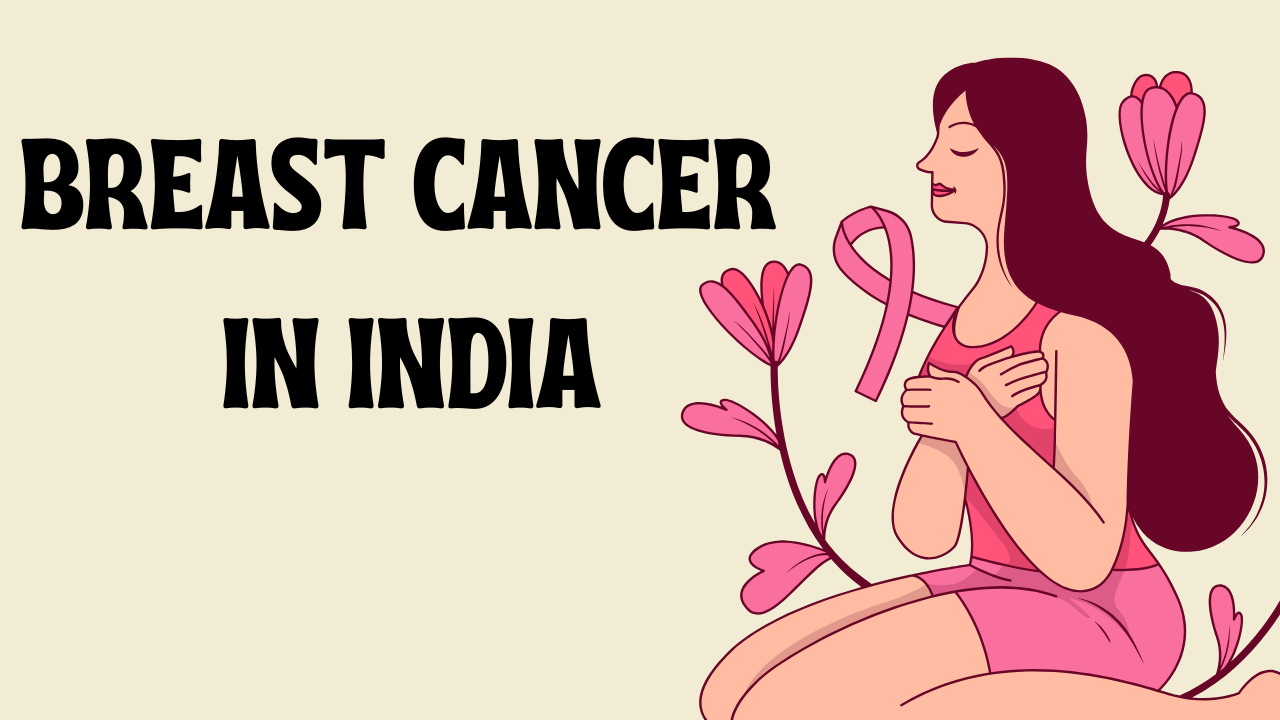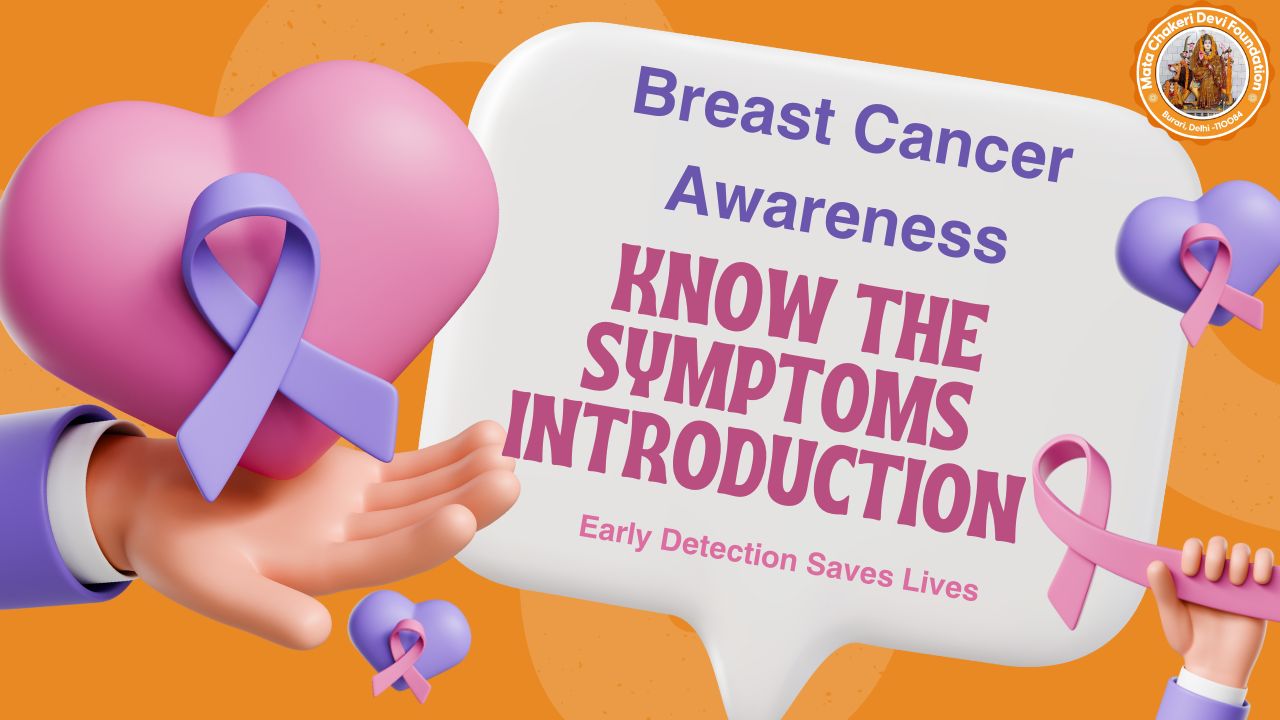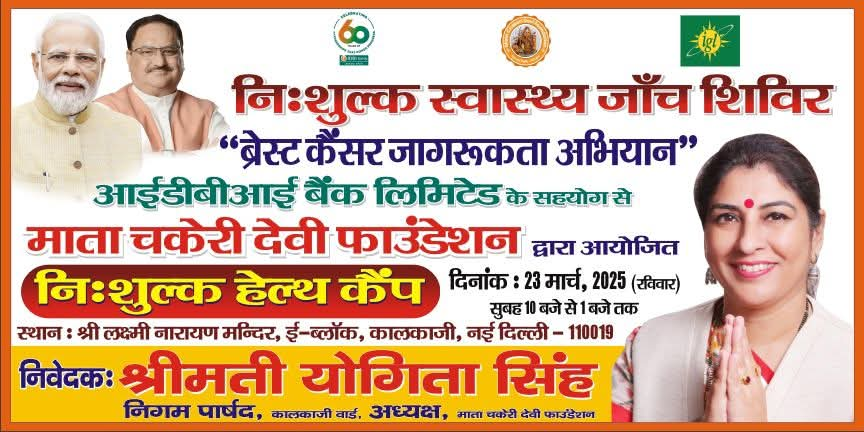Introduction
In today’s busy lifestyle, women often neglect their health. Between household responsibilities, family, and work, they rarely find time for themselves. This is the reason why many serious illnesses are detected late.
Breast cancer is one such disease which, if identified at an early stage, can be treated easily.
However, due to lack of awareness and hesitation, women often delay medical check-ups, allowing the disease to progress.
In this blog, we will discuss in detail the symptoms, causes, diagnosis, treatment, and preventive measures of breast cancer.
What is Breast Cancer?
Breast cancer is a type of cancer that begins in the cells of the breast. When breast cells grow uncontrollably, they form a lump or tumor. This lump can be malignant (cancerous), which means it can spread to other parts of the body.
Breast Cancer in India

According to the World Health Organization (WHO), breast cancer is the most common cancer among women in India.
Every year, millions of new cases are reported.
It is more common in urban areas, but cases in rural regions are also rising rapidly.
The worrying fact is that about 50% of cases are detected late, making treatment more difficult.
Major Causes of Breast Cancer
There are several causes of breast cancer. Some of the key risk factors include:
Genetic factors – Higher risk if a family member has had breast or ovarian cancer.
Age – Risk increases after the age of 40.
Hormonal imbalance – Long-term use of Hormone Replacement Therapy (HRT).
Unhealthy lifestyle – Excessive junk food, alcohol, smoking, and obesity.
Reproductive factors – Late marriage, late motherhood, or not breastfeeding.
Lack of exercise – Physical inactivity also increases the risk.
Early Symptoms of Breast Cancer

In the early stages, breast cancer symptoms may be mild, but they should not be ignored.
Lump or hardness – A painless lump in the breast or underarm.
Change in shape – Uneven size or shape of the breasts.
Skin changes – Redness, thickening, or peeling of breast skin.
Nipple changes – Inward turning of the nipple or unusual discharge (blood/watery).
Swelling or pain – Persistent swelling or pain in the breast or underarm.
Diagnosis and Detection of Breast Cancer
Timely diagnosis can help detect cancer early.
Self-Examination – Every woman should examine her breasts once a month.
Mammography – An X-ray technique that can detect cancer in its early stages.
Ultrasound – Helps determine the nature of the lump.
Biopsy – Confirms the presence of cancer.
MRI Scan – Detects the spread of cancer.
Treatment of Breast Cancer
The treatment depends on the stage of cancer and the patient’s condition.
Surgery – Removal of the cancerous lump or the entire breast.
Chemotherapy – Use of medicines to destroy cancer cells.
Radiotherapy – Use of radiation to kill cancer cells.
Hormone Therapy – To reduce the effect of hormones on cancer.
Immunotherapy – To strengthen the immune system.
Preventive Measures
Although breast cancer cannot be prevented completely, certain habits can lower the risk.
Regular check-ups – Mammography after the age of 40.
Healthy diet – Include green vegetables, fruits, whole grains, and low-fat food.
Exercise – At least 30 minutes of daily exercise.
Breastfeeding – Reduces the risk of breast cancer.
Avoid addictions – Stay away from smoking and alcohol.
Stress management – Practice yoga and meditation.
Why is Awareness About Breast Cancer Important?
Women in India still hesitate to talk about cancer.
There is a lack of awareness in rural and small towns.
Recognizing symptoms on time and consulting a doctor can save lives.
Awareness programs in schools, colleges, and workplaces are essential.
Conclusion
Breast cancer is a serious but treatable disease. If women perform regular self-examinations and consult doctors immediately upon noticing any unusual symptoms, lives can be saved. It is important to break the silence around breast cancer and talk about it openly.
Health is one’s own responsibility first. So, do not ignore the signals of your body, stay alert, and spread awareness to others as well.

